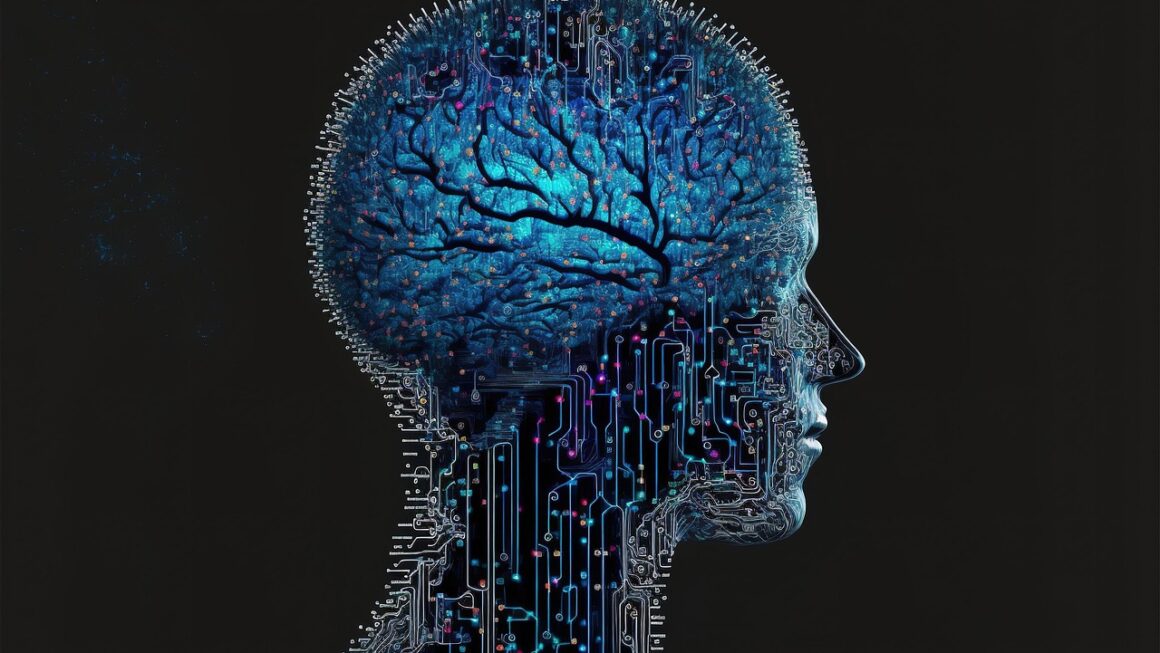Imagine stepping into a digital world where you can work, socialize, shop, and play, all from the comfort of your home. This isn’t science fiction; it’s the metaverse, an evolving concept that’s poised to redefine our relationship with technology and each other. This blog post will delve into the intricacies of the metaverse, exploring its components, potential applications, and the exciting (and sometimes daunting) future it promises.
What is the Metaverse?
The metaverse is a persistent, shared, 3D virtual world or worlds that are interactive, immersive, and collaborative. Think of it as the next evolution of the internet, where instead of just browsing websites, you’re in the internet. It’s a convergence of physical and digital realities, allowing users to have experiences that are indistinguishable from real-world interactions.
Key Characteristics of the Metaverse
- Persistence: The metaverse doesn’t “reset” when you log off. The environment continues to exist and evolve, even when you’re not actively participating.
- Real-time Interactivity: Users can interact with each other and the virtual environment in real-time, just as they would in the physical world.
- Self-Sovereignty: Users can own and control their digital identities, assets, and experiences within the metaverse. This is often facilitated by blockchain technology and NFTs.
- Interoperability: Ideally, different metaverse platforms will be able to connect and interact with each other, allowing users to seamlessly move between virtual worlds with their avatars and possessions. This remains a significant challenge.
- Decentralization (Ideally): Many proponents believe the ideal metaverse will be decentralized, meaning no single entity controls it. Blockchain plays a critical role here.
Components of a Metaverse Experience
- Virtual Reality (VR): VR headsets provide an immersive visual and auditory experience, allowing users to feel like they are truly present in the virtual world.
- Augmented Reality (AR): AR overlays digital information onto the real world, enhancing the user’s perception of their surroundings. Think Pokémon Go or AR applications that allow you to “try on” clothes virtually.
- Avatars: Digital representations of users within the metaverse. These can range from realistic representations to fantastical characters.
- Digital Assets: Virtual items, such as clothing, art, or land, that can be bought, sold, and traded within the metaverse.
- Blockchain and NFTs: Blockchain technology provides a secure and transparent way to manage digital ownership, while NFTs (Non-Fungible Tokens) represent unique digital assets.
- Cryptocurrencies: Used as the primary form of currency within many metaverse platforms.
- Connectivity: Reliable and high-speed internet access is crucial for a seamless metaverse experience.
The Metaverse: Applications Across Industries
The metaverse is not just about gaming and entertainment; it has the potential to revolutionize various industries.
Gaming and Entertainment
- Immersive Gaming: Games like Fortnite and Roblox are early examples of metaverse experiences, allowing players to create, interact, and participate in virtual events.
- Virtual Concerts and Events: Artists can perform for global audiences in virtual venues, offering unique and interactive experiences. Ariana Grande’s Fortnite concert is a prime example.
- Interactive Storytelling: Users can become active participants in narratives, shaping the story through their choices and actions.
Education and Training
- Virtual Classrooms: Students can attend classes and interact with teachers and classmates in immersive virtual environments.
- Simulated Training: Professionals can practice complex tasks in realistic simulations without real-world risks. Surgeons can practice operations, pilots can train in flight simulators, and engineers can design and test structures virtually.
- Historical Recreations: The metaverse can bring history to life, allowing users to explore ancient civilizations and witness historical events firsthand.
Commerce and Retail
- Virtual Shopping: Consumers can browse and purchase products in virtual stores, trying them on or visualizing them in their homes using AR.
- Virtual Real Estate: Investors can buy, sell, and develop virtual land within the metaverse, creating new revenue streams.
- Digital Marketing: Brands can engage with consumers in innovative ways through virtual events, interactive advertising, and personalized experiences.
Work and Collaboration
- Virtual Workspaces: Remote teams can collaborate in shared virtual offices, fostering a sense of connection and improving productivity.
- Virtual Meetings: Instead of traditional video conferences, employees can meet in 3D virtual environments, enhancing communication and engagement.
- Design and Engineering: Teams can collaborate on product design and development in immersive virtual environments, allowing them to visualize and test prototypes in real-time.
Challenges and Concerns Surrounding the Metaverse
While the metaverse holds immense potential, it also presents several challenges and concerns that need to be addressed.
Privacy and Security
- Data Collection: Metaverse platforms collect vast amounts of user data, raising concerns about privacy and data security.
- Identity Theft: Virtual identities can be stolen or impersonated, leading to fraud and other malicious activities.
- Cybersecurity Threats: Metaverse platforms are vulnerable to cyberattacks, which could compromise user data and disrupt virtual experiences.
Accessibility and Inclusivity
- Digital Divide: Access to the metaverse requires high-speed internet and expensive hardware, potentially excluding individuals and communities with limited resources.
- Accessibility for People with Disabilities: Metaverse platforms need to be designed to be accessible to people with disabilities, ensuring that everyone can participate.
- Representation and Bias: Avatars and virtual environments should reflect the diversity of the real world, avoiding stereotypes and biases.
Mental and Physical Health
- Addiction: Excessive immersion in the metaverse can lead to addiction and neglect of real-world responsibilities.
- Social Isolation: Spending too much time in virtual worlds can lead to social isolation and loneliness.
- Physical Health Issues: Prolonged use of VR headsets can cause eye strain, motion sickness, and other physical health problems.
Regulatory and Ethical Considerations
- Intellectual Property: Protecting intellectual property in the metaverse is a complex issue, requiring new legal frameworks.
- Content Moderation: Moderating content and preventing harmful behavior in virtual environments is a significant challenge.
- Liability: Determining liability for actions and events that occur in the metaverse is a complex legal issue.
Investing in the Metaverse: Opportunities and Risks
Investing in the metaverse can be lucrative, but it’s crucial to understand the opportunities and risks involved.
Investment Opportunities
- Metaverse Platforms: Investing in companies that are building and developing metaverse platforms.
- VR/AR Technology: Investing in companies that are developing VR and AR hardware and software.
- Digital Assets: Investing in NFTs and other digital assets within the metaverse.
- Metaverse-Related Services: Investing in companies that provide services related to the metaverse, such as virtual real estate development, digital marketing, and cybersecurity.
Risks to Consider
- Market Volatility: The metaverse market is still in its early stages and is subject to significant volatility.
- Technological Disruptions: Rapid technological advancements could render current metaverse technologies obsolete.
- Regulatory Uncertainty: The regulatory landscape for the metaverse is still evolving, creating uncertainty for investors.
- Competition: The metaverse market is becoming increasingly competitive, with new players emerging all the time.
Before investing, conduct thorough research, understand your risk tolerance, and consider consulting with a financial advisor.
Conclusion
The metaverse represents a significant shift in how we interact with technology and each other. While it offers exciting possibilities for entertainment, education, commerce, and collaboration, it also presents challenges related to privacy, security, accessibility, and ethical considerations. As the metaverse continues to evolve, it’s essential to approach it with a critical and informed perspective, recognizing both its potential and its limitations. By addressing the challenges and embracing responsible innovation, we can shape the metaverse into a positive and inclusive space for everyone.




